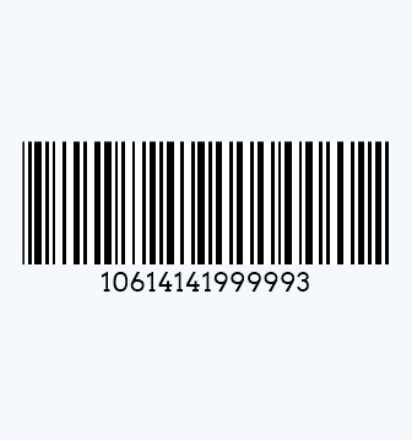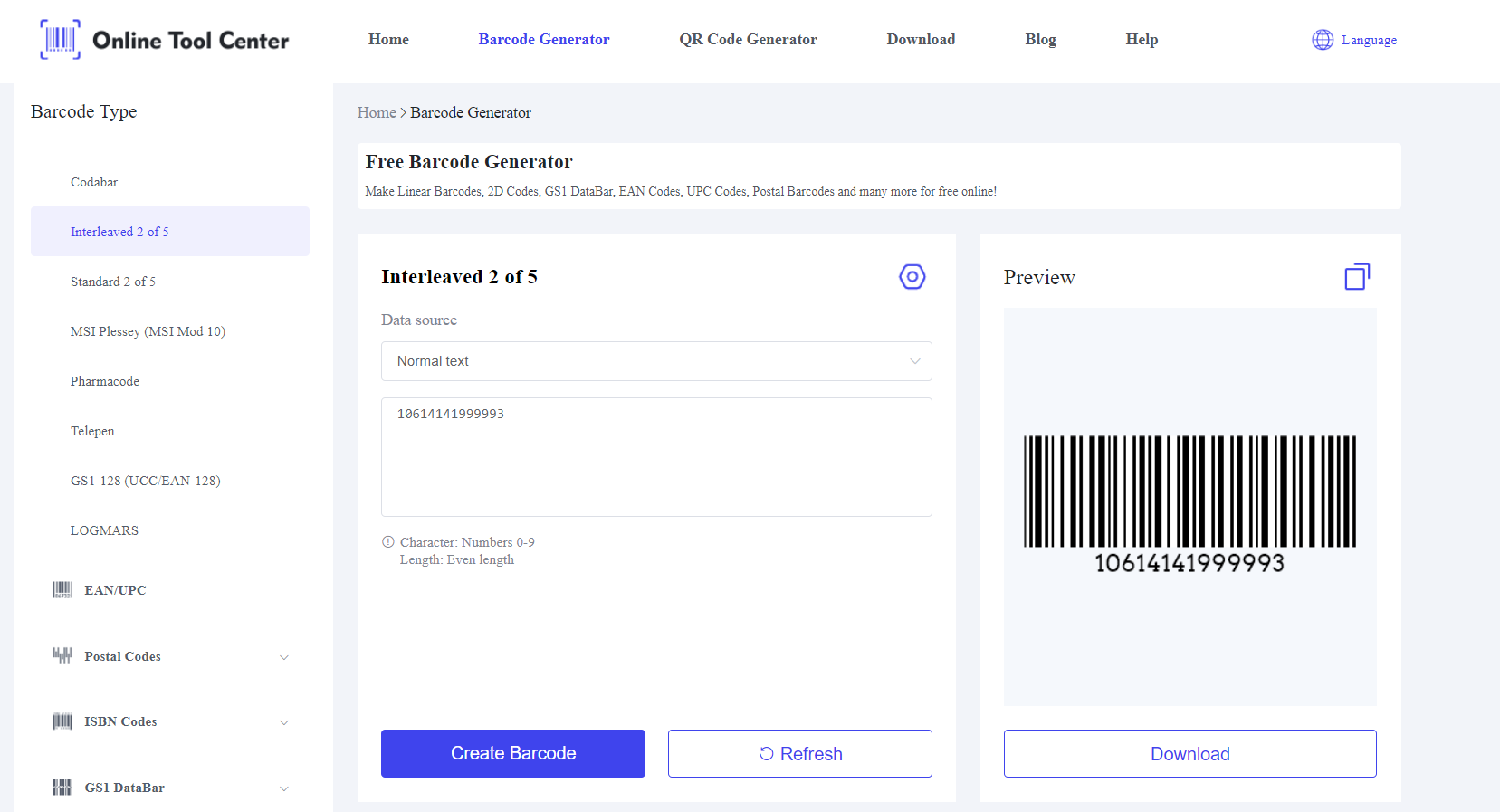Barcodes are a crucial component of modern logistics and inventory management, with the ITF 14 barcode playing a significant role in these operations.
This guide explores the essentials of ITF-14 barcodes, their benefits, and the best practices for generating them using an ITF 14 barcode generator.
What is an ITF 14 Barcode?
An ITF 14 barcode, based on the Interleaved 2 of 5 (I2/5) symbology, is a 14-digit code used primarily for marking product packaging, particularly in logistics and warehousing.

Here's a breakdown of its key elements:
Symbol Structure:
Bearer Bars: These are the rectangular bars surrounding the barcode that improve scanning reliability and protect the code from damage. They can be full, top and bottom, or only on the sides.
Data Characters: The barcode contains numeric data only, encoded using the Interleaved 2 of 5 (ITF) symbology.
Character Set:
Numeric Only: ITF-14 barcodes encode numbers exclusively, making them suitable for global trade item numbers (GTIN).
Check Digit:
Calculation: The last digit is a check digit, calculated using the Modulo 10 algorithm. This ensures data integrity by verifying the accuracy of the scanned data.
Size:
Dimensions: ITF-14 barcodes have flexible dimensions, but the width of the narrowest bar (X-dimension) should be between 0.495 and 0.940 mm, and the height should be at least 32 mm to ensure readability.
Scaling: The barcode can be scaled to fit different packaging sizes while maintaining the aspect ratio for proper scanning.
Encoding:
Structure: The 14 digits include a packaging indicator, a GS1 Company Prefix, an item reference, and the check digit.
Interleaved Format: ITF 14 code uses the Interleaved 2 of 5 formats, where pairs of digits are encoded in alternating bars and spaces.
Common Use Cases:
Logistics and Warehousing: ITF-14 barcodes are ideal for labeling cartons, pallets, and bulk packaging, facilitating tracking and inventory management in supply chains.
Durability: Their robust design allows for effective scanning even on corrugated cardboard and other rough surfaces.
Benefits of Using ITF-14 Barcodes
ITF 14 barcodes are known for their resilience. They can be easily scanned even when printed on rough surfaces such as cardboard, ensuring that they remain readable throughout the supply chain process.
ITF 14 barcodes are designed to integrate seamlessly with different packaging and logistics systems, facilitating efficient tracking and management of goods.
Given their durability and compatibility, ITF 14 barcodes are highly cost-effective for large-scale operations, reducing the need for replacements and minimizing errors in logistics.
Many companies have successfully implemented ITF 14 barcodes to streamline their supply chain operations.
For example, a large retail chain improved its inventory management and reduced logistic errors by standardizing the use of ITF 14 barcodes on all bulk packaging.
ITF-14 Barcodes vs. Other Barcode Types
While UPC and EAN barcodes are commonly used for individual products at the point of sale, ITF 14 barcodes are used for outer packaging and bulk containers.
Unlike UPC and EAN, ITF 14 barcodes are designed for environments where barcodes need to be robust and easily scanned under less-than-ideal conditions.
In scenarios where durability and ease of scanning are critical, such as in warehousing and logistics, ITF 14 barcodes offer significant advantages over other types.
ITF 14 barcodes adhere to GS1 standards, which ensure consistency and reliability across different systems and industries. This standardization is crucial for global logistics operations.
How to Generate an ITF-14 Barcode?
Using a free online barcode generator, you can quickly and accurately create ITF 14 barcodes, ensuring they meet industry standards and are suitable for your packaging needs.

A Simple Guide to Using an ITF 14 Barcode Generator:
1. Visit the ITF-14 barcode generator: Access the generator online.
2. Enter the required details: Input the 14-digit number, ensuring it includes the correct packaging indicator, GS1 Company Prefix, item reference, and check digit.
3. Generate the barcode: Click on the Create button.
4. Download and print: Save the generated barcode and print it on the desired packaging material.
Best Practices for Generating and Printing ITF 14 Barcodes
● Ensure the barcode is printed with high contrast to improve readability.
● Use durable materials for printing to maintain the barcode's integrity during handling and transport.
● Regularly verify the accuracy of generated barcodes to prevent errors in the supply chain.
Common Issues and Solutions with ITF 14 Barcodes
Troubleshooting Common Problems with ITF 14 Barcodes:
● Scanning Issues: Ensure barcodes are printed at the correct size and with sufficient contrast. Avoid printing over folds or seams.
● Damage During Handling: Use protective packaging materials and handle with care to prevent barcode damage.
● Incorrect Encoding: Double-check the input data before generating the barcode to ensure accuracy.
Tips for Ensuring Accurate Scanning:
● Use high-quality barcode printers and materials.
● Regularly inspect barcodes for wear and tear.
● Train staff on proper barcode handling and scanning techniques.
FAQs about ITF-14 Barcodes
1. What is the difference between ITF 14 and other barcodes?
ITF 14 barcodes are designed for outer packaging and bulk containers, while other barcodes like UPC and EAN are used for individual items.
2. How to convert UPC A to ITF-14?
To convert a UPC-A barcode to ITF-14, you typically add leading zeros to make it a 14-digit number and ensure it conforms to the ITF-14 format, including the necessary check digit.
To conclude, ITF-14 barcodes are essential for efficient logistics and inventory management, offering durability, compatibility, and cost-effectiveness.
Implementing ITF 14 barcodes can significantly enhance your operational efficiency, reducing errors and improving overall logistics performance.
Try our free online barcode generator and see the difference it can make in your operations.




